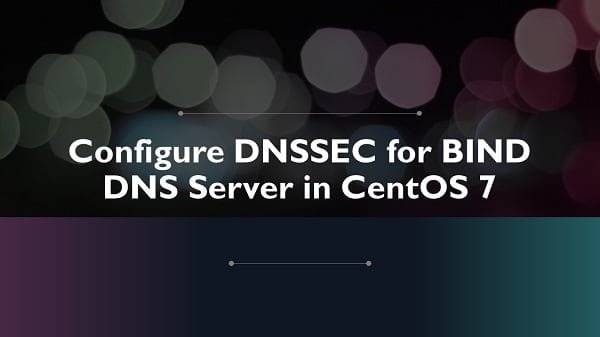Centos DNSSEC: Enhancing Security for Your Domain
Domain Name System Security Extensions (DNSSEC) is a set of protocols that add an additional layer of security to the Domain Name System (DNS). By utilizing DNSSEC, you can authenticate the origin of DNS data, ensuring that it has not been tampered with or modified in transit.
If you are running a CentOS server and want to enhance the security of your domain, implementing DNSSEC is a crucial step. In this article, we will guide you through the process of setting up DNSSEC on your CentOS server.
Why Implement DNSSEC on CentOS?
Implementing DNSSEC on your CentOS server brings several benefits:
- Improved data integrity: DNSSEC ensures that the DNS data being served is authentic and has not been altered.
- Enhanced security against DNS spoofing and cache poisoning attacks.
- Increased trust: DNSSEC provides a layer of trust for your domain visitors, as they can be confident that the DNS information is accurate.
- Compliance with security standards: Many organizations and regulations require the implementation of DNSSEC to ensure data security.
Setting Up DNSSEC on CentOS
Setting up DNSSEC on your CentOS server involves several steps:
Step 1: Install DNSSEC Tools
First, you need to install the DNSSEC tools on your CentOS server. You can do this by running the following command:
sudo yum install bind-utils
Step 2: Generate DNSSEC Keys
Next, you need to generate the DNSSEC keys for your domain. This can be done using the dnssec-keygen command. Make sure to replace example.com with your domain name:
dnssec-keygen -a NSEC3PARAM -b 2048 -n ZONE example.com
Step 3: Configure DNS Zone
Once you have generated the keys, you need to update your DNS zone configuration to include the DNSSEC keys. This involves adding the DS record to your domain’s DNS zone file.
Step 4: Enable DNSSEC
Finally, enable DNSSEC on your CentOS server by updating your BIND configuration file. Add the following lines to your named.conf file:
dnssec-enable yes;
dnssec-validation yes;
Testing DNSSEC Configuration
Once you have set up DNSSEC on your CentOS server, it’s essential to test the configuration to ensure everything is working correctly. You can use tools like dig and delv to validate your DNSSEC implementation.
By following these steps, you can enhance the security of your domain and protect it against DNS-related attacks. DNSSEC is a crucial security measure that every CentOS server owner should consider implementing to safeguard their online presence.
